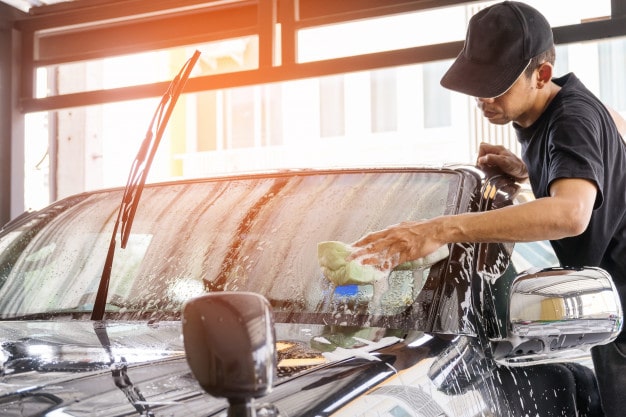Carwash wastewater treatment
Carwash wastewater treatment
Carwash wastewater treatment is important for environmental protection due to the presence of contaminants in its wastewater. Today, with the increasing number of cars, both their washing and the amount of wastewater have increased. These wastewater contains large amounts of detergent, heavy metals, oil and grease, paint, opacity and TSS. If wastewater is discharged into nature, the pollutants in it will absorb and contaminate groundwater. These pollutants can be hazardous to human health.

On the other hand, carwash wastewater treatment also saves water. 80% water can be returned to the beginning of the line and reused by carwash treatment. Therefore, carwash wastewater treatment is a must for the employees of this trade union.
Construction of carwash wastewater treatment package
The design and construction of the carwash wastewater treatment package is done by Abram Company according to the quality and discharge of the wastewater. Carwash wastewater treatment is performed by two methods: electrical coagulation (EC) or electrocogulation and chemical coagulation. Because carwash wastewater is considered a component of industrial wastewater, it is not easily treated by bio-treatment. Wastewater treatment package is more economical than chemical coagulation treatment. This is economical due to the use of direct current instead of chemical injection in the electrical coagulation method. It is also more efficient because of its high removal efficiency and produces less sludge.
The method of carwash wastewater treatment by electric coagulation method
Wastewater treatment in this method is by means of direct current and iron and aluminum plates. In fact, coagulation and flocculation are done to remove heavy metals, detergents, oils and greases. By coagulation and clotting, particles and contaminants are neutralized and stick together. The neutral particles in the ponds are heavy and sedimentary and are separated from the effluent. Finally, the residual TSS is removed from the water by additional color filtration. This operation will allow reuse of wastewater and wastewater in the carwash.
Wastewater treatment in this method is by means of direct current and iron and aluminum plates. In fact, coagulation and flocculation are done to remove heavy metals, detergents, oils and greases. By coagulation and clotting, particles and contaminants are neutralized and stick together. The neutral particles in the ponds are heavy and sedimentary and are separated from the effluent. Finally, the residual TSS is removed from the water by additional color filtration. This operation will allow reuse of wastewater and wastewater in the carwash.

